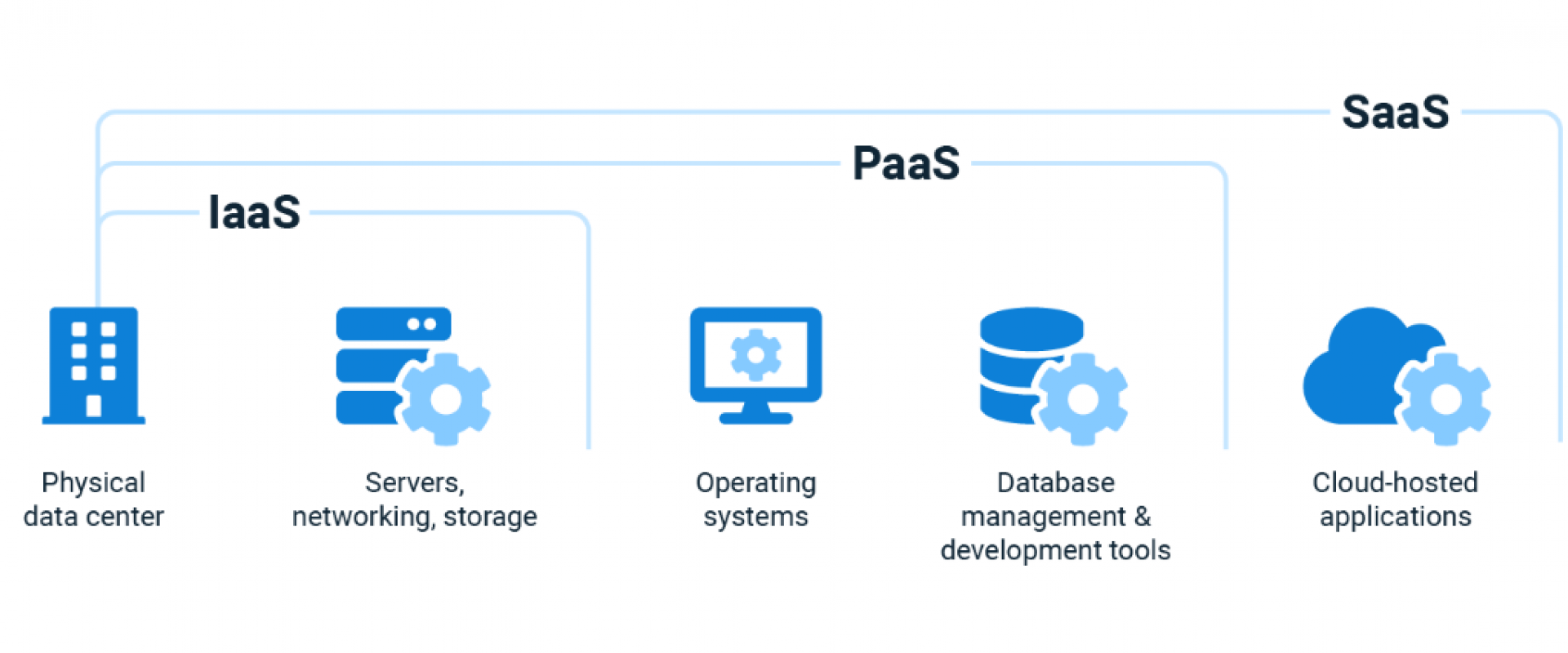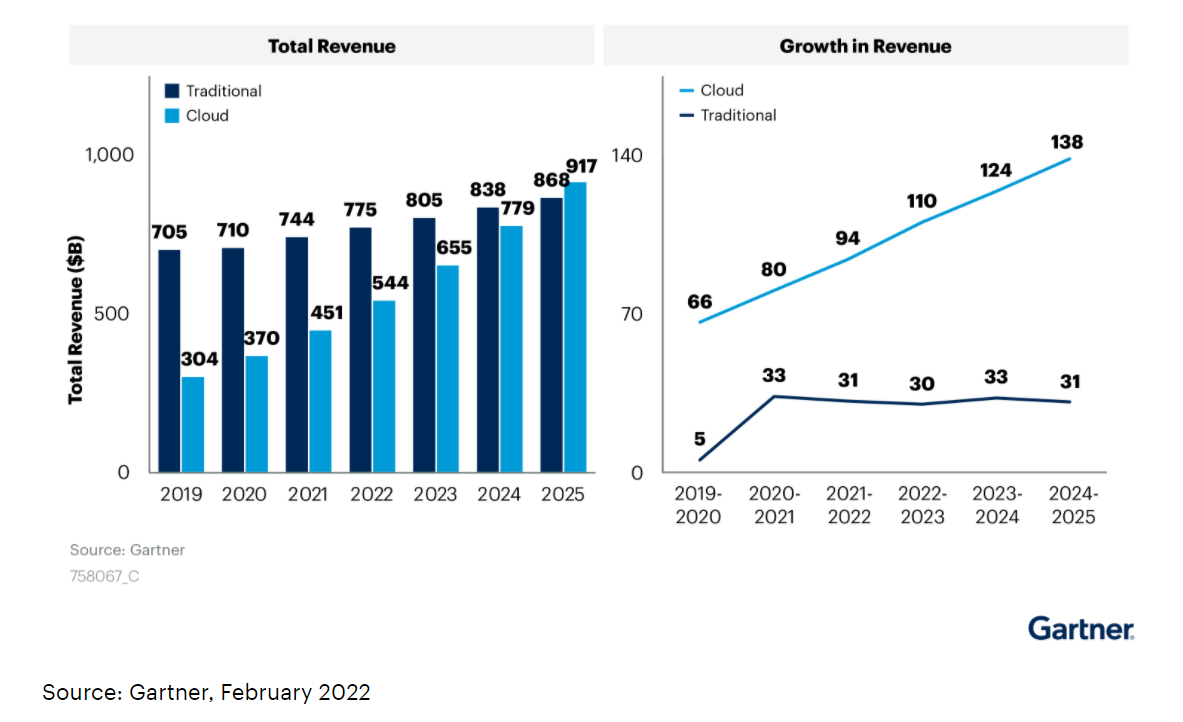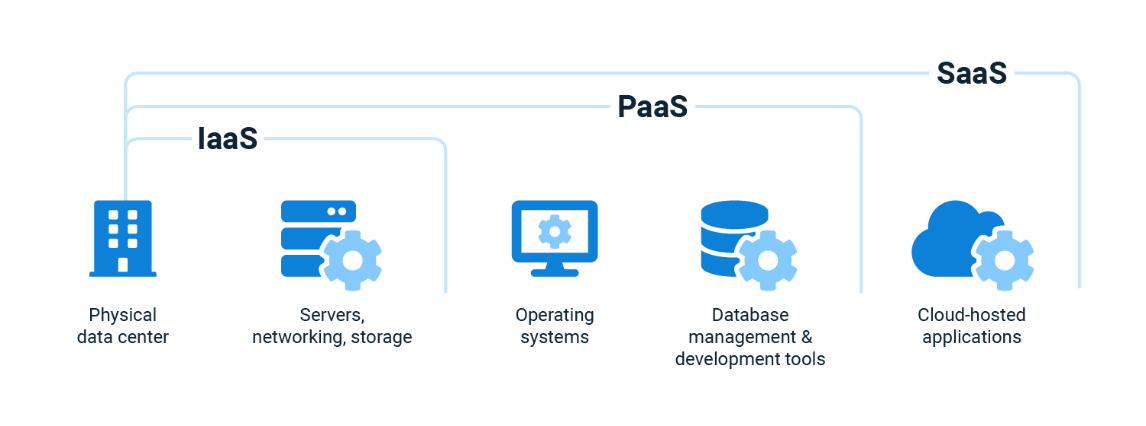What Is Cloud Orchestration?

Cover the differences between cloud orchestration and automation, the various "as a service" models, and the benefits of cloud orchestration and tooling.
Wherever you work, you've probably noticed a big shift to the cloud in your applications. From storing data like emails or photos to developing software in a cloud repository like Git, cloud solutions are dominating the market. Gartner's study indicates that cloud product revenue will overtake traditional IT solutions by 2025.
If you work with cloud products, you want to make them more efficient and cost-effective. Two processes that can help you with that are:
- Cloud orchestration
- Cloud automation
These concepts are often used interchangeably, but there are some key ways they differ.
In this post, I cover the differences between cloud orchestration and cloud automation, the various "as a service" models, the benefits of cloud orchestration, tooling, and where deployment fits in.

The Difference Between Cloud Orchestration and Cloud Automation
Cloud orchestration is the coordination and automation of workloads, resources, and infrastructure in public and private cloud environments and the automation of the whole cloud system. Each part should work together to produce an efficient system.
Cloud automation is a subset of cloud orchestration focused on automating the individual components of a cloud system.
Cloud orchestration and automation complement each other to produce an automated cloud system.
"As a Service" Models
Developers access cloud services via 3 main models:
- Software as a Service (SaaS)
- Platform as a Service (PaaS)
- Infrastructure as a Service (IaaS)
SaaS is a software licensing and delivery model where a software solution is provided on-demand and hosted by the provider. SaaS solutions often have a subscription fee or use a freemium pricing model. The benefit of this approach is that you don't have to install and host the application and can access what you need. You probably already use SaaS solutions like Dropbox, Gmail, or Netflix.
PaaS platforms give you a complete cloud development and deployment environment. You can load operating systems and development tools on VMs. PaaS provides a contained environment to build cloud applications without managing licensing or underlying application infrastructure. Think of the platforms used to build SaaS applications like Microsoft Azure, Google Cloud Platform, and Amazon Web Services.
IaaS provides on-demand services to deploy IT infrastructures such as virtual machines, servers, networks, and storage. IaaS is pay-as-you-go, so you pay for the infrastructure you need when you need it. Think of IaaS as the infrastructure behind PaaS and SaaS systems. Examples of IaaS platforms include Digital Ocean and AWS EC2.
Developers build SaaS systems on IaaS and PaaS platforms, and developers build PaaS platforms on IaaS platforms. Together, "as a service" systems allow you to achieve cloud orchestration and automation.
The diagram below shows how SaaS, IaaS, and PaaS work together to deliver cloud solutions:

Benefits of Cloud Orchestration
Cloud orchestration lets you automate every part of your cloud solution and leads to:
- Increased efficiency;
- Cost reductions;
- Support for DevOps;
- Increased security.
You can automate processes in a cloud solution to detect when peak times occur and deploy extra services to prevent services from being overloaded. Cloud solutions can also shut down any idle processes you don't need. By optimizing the allocation of resources, you increase the platform's efficiency and reduce costs.
Cloud orchestration supports the DevOps framework by allowing continuous integration, monitoring, and testing. Cloud orchestration solutions manage all services so that you get more frequent updates and can troubleshoot faster. Your applications are also more secure as you can patch vulnerabilities quickly.
The journey towards full cloud orchestration is hard to complete. To make the transition more manageable, you can find benefits along the way with cloud automation. For example, you might automate the database component to speed up manual data handling or install a smart scheduler for your Kubernetes workloads. Even small improvements can save you time and money.
Cloud orchestration and automation provide you with increased efficiency, reduced costs, support for DevOps, and increased security.
Cloud Orchestration Tools
Terraform is an open-source Infrastructure as Code (IaC) tool and a common framework for deploying infrastructure solutions. You specify your infrastructure in configuration files to deploy infrastructure on the cloud. IaC can be saved and restored between versions.
Kubernetes is a container orchestration tool developed by Google. Containers are lightweight computing units that make up a larger application. Kubernetes works with cloud providers to manage and deploy containers on infrastructure. Resources can be scaled up or down depending on demand, saving you money and improving the reliability of your application.
Many PaaS cloud providers have tools that allow cloud orchestration, such as:
- AWS Cloud Formation
- Microsoft Azure Automation
- IBM Cloud Orchestrator
- Google Cloud Composer
These tools let you automate your cloud environments through Infrastructure as Code, deployment management GUIs, and integrations to other cloud solutions in the PaaS system.
There are also dedicated cloud orchestration tools, such as:
- Red Hat Ansible
- Cloudify
- Morpheus
These dedicated tools provide cloud provisioning, configuration management, and automation. All cloud orchestration tools work with technologies such as Terraform and Kubernetes.
Your choice of tool will depend on your:
- IT budget;
- Preferred languages;
- Location of pre-existing deployments;
- Other application-specific requirements.
Where Does Deploy Fit In?
Deploy is a cloud-agnostic deployment tool that helps you set up and manage the deployment of an application through an on-premises solution or a cloud provider.
Deploy takes the application from code to build to deployment. After the deployment is live, a tool like Kubernetes or AWS Cloud Formation can manage the state of the infrastructure and cloud resources of the application. If you need to deploy the application with a new version, Deploy manages the new release and deploys a new release version to the production environment.
Conclusion
In this post, I covered the differences between cloud orchestration and cloud automation, the various "as a service" models, the benefits of cloud orchestration, tooling, and where deployment fits in.
Cloud orchestration and automation provide you with increased efficiency, reduced costs, support for DevOps, and increased security.
Cloud services are usually accessed via Software as a Service (SaaS), Platform as a Service (PaaS), and Infrastructure as a Service (IaaS). SaaS, PaaS, and IaaS provide on-demand services for you to access resources without managing them. You can combine SaaS, PaaS, and IaaS to achieve cloud orchestration and automation.
Popular frameworks and tools for cloud orchestration include Terraform, Kubernetes, PaaS orchestration tools, and dedicated orchestration tools.
The cloud-agnostic deployment tool that works with your DevOps toolchain to achieve cloud orchestration and faster, more reliable deployments.
Happy deployments!
We Provide consulting, implementation, and management services on DevOps, DevSecOps, Cloud, Automated Ops, Microservices, Infrastructure, and Security
Services offered by us: https://www.zippyops.com/services
Our Products: https://www.zippyops.com/products
Our Solutions: https://www.zippyops.com/solutions
For Demo, videos check out YouTube Playlist: https://www.youtube.com/watch?v=4FYvPooN_Tg&list=PLCJ3JpanNyCfXlHahZhYgJH9-rV6ouPro
If this seems interesting, please email us at [email protected] for a call.
Relevant Blogs:
5 Important Kubernetes Concepts Made Easy
Go CDK! What This Means for the World of IaC
Best Practices for Building a Cloud-Native Data Warehouse or Data Lake
Recent Comments
No comments
Leave a Comment
We will be happy to hear what you think about this post